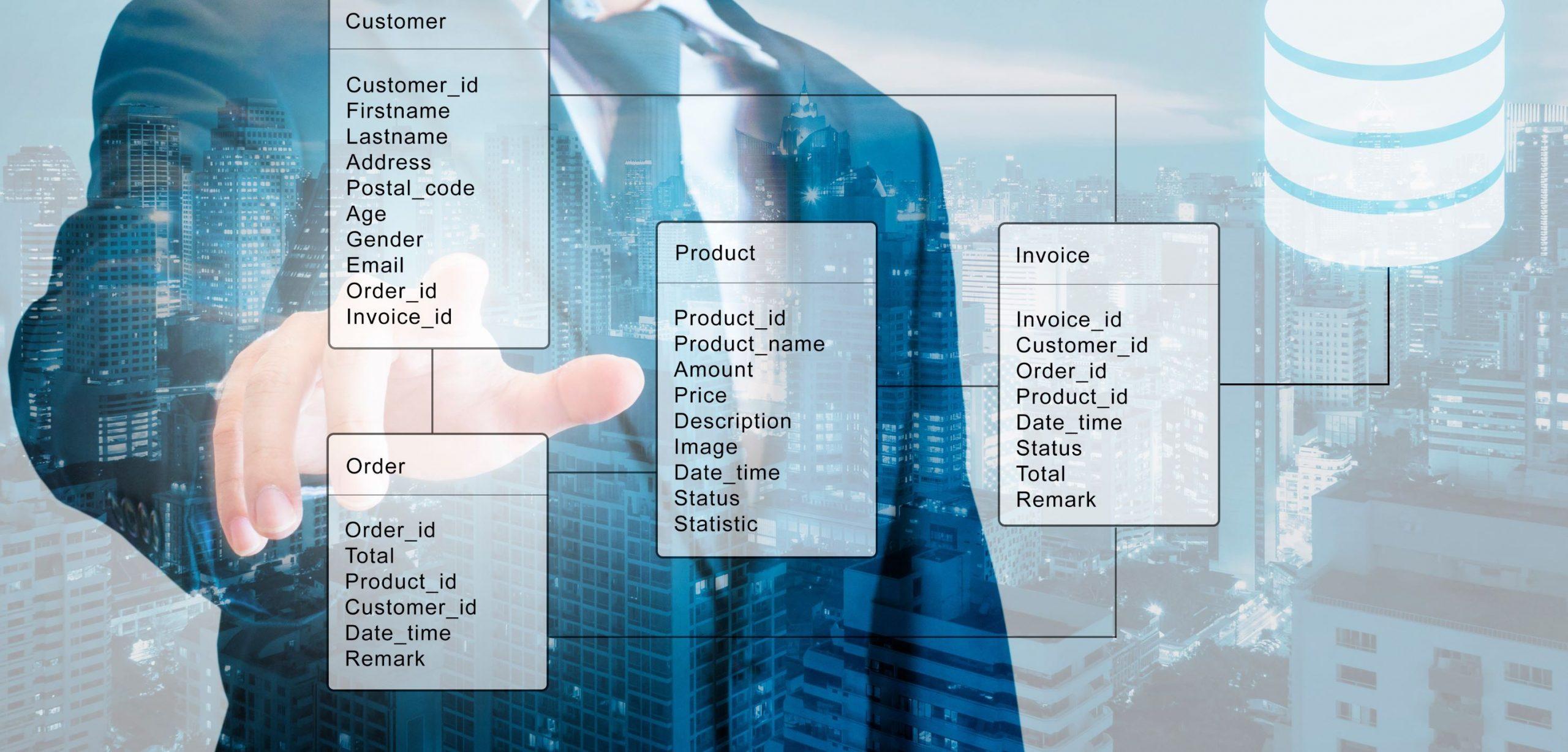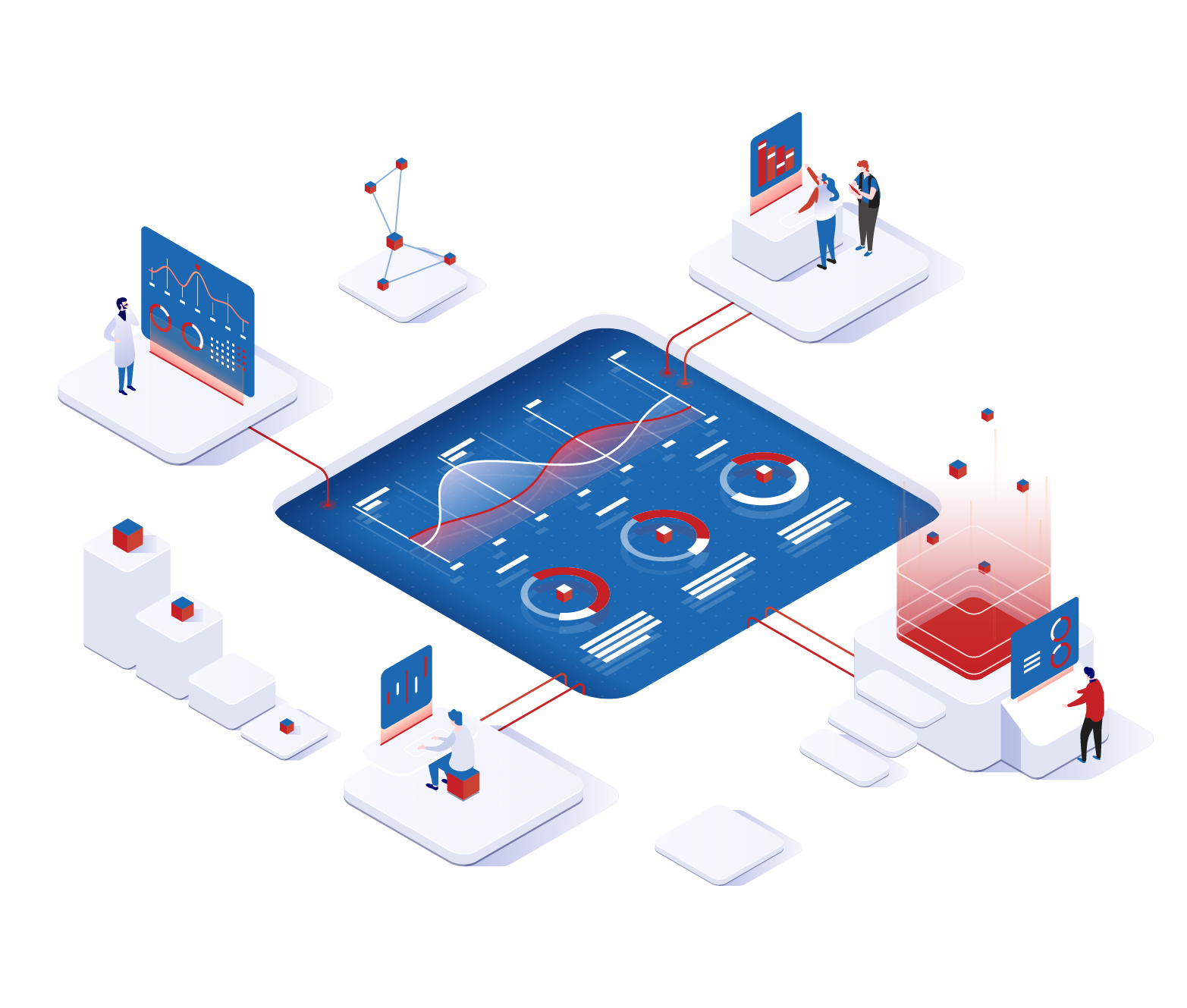
Understanding The Data Transformation Process For Your Business
Julian Wallis
11 min read

This article will define data transformation and discuss the various transformation methods that can help your business achieve its goals. It will also highlight some of the key benefits of data transformation.
Introduction 🧐
Data is constantly being generated, collected, and analysed in today’s world. To make use of this data, it must be transformed and structured correctly so it can be understood and used.
The ability to convert data from one form into another is a necessary skill for anyone who works with it. A world where the information is collected and stored in so many formats requires you not only to be able to perform basic steps of transforming them but also to know what kind will best suit your business needs at any given time. This can seem overwhelming initially, but don’t worry, as this article explains what goes in a typical data transformation process.
Let’s first understand what data transformation is and explore the different types of data transformation. Then, we’ll discuss some benefits businesses can experience from embracing data transformation.
What is Data Transformation? 💽
Data transformation is the process of converting large data sets from one format or structure to another. Companies do this for many reasons, such as to make it easier to work with, to improve efficiency, or to make it more compatible with other data. Simply put, data transformation converts data into different formats and structures — and they often deal with big data.
Data transformation is a process of pivoting, cleansing and normalising big data. Managing big data effectively is no easy feat. Organisations usually pair up sophisticated systems that process and store big data alongside tools that support analytics to form their data management infrastructure. Although big data doesn’t translate to any specific or exact volume of data, big data deployments often involve terabytes, petabytes, and even exabytes of data created and collected over time.

Transforming big data can be a powerful tool for improving the quality and usability of data. It can be easier to work with and understand by converting data into a more suitable format. Additionally, data transformation can help to improve efficiency and compatibility between different data sets.
There are many reasons why you might want to transform big data. For example, you may need to convert data from a legacy system into a new format that your organisation’s current applications can use. Or, you might need to convert data from one application into a form that another application can use.
Types of Data Transformation 💾
Data transformation is the lifeblood of any analytics process. From converting data types to flattening hierarchical structures, these operations shape the raw data into something more usable for modern software systems like statistical analysis programs or business intelligence toolsets. They also help you understand what information should be used so you don’t end up with useless or redundant observations!
Data scientists can implement further transformative changes as necessary by ensuring each layer does one specific task well enough before moving on to another part (or even all) of this process.
There are several different types of data transformation, including data normalisation, data aggregation, data cleansing, and data enrichment. Each type has its specific purpose and benefits.
Some of the standard data transformation types include the following.
- Format Conversion: This type of transformation involves converting data from one format to another, such as from XML to JSON.
- Data Cleansing/Scrubbing: This transformation involves cleaning up data more accurately and consistently. Data cleansing or scrubbing may include tasks such as data validation, data standardisation, and data deduplication.
- Data Enrichment: This type of transformation involves adding more information to data to be more informative and valuable. Data enrichment may include tasks such as adding geographic data to customer data or adding product data to purchase data.
- Data Aggregation: This type of transformation combines data from multiple sources into a single dataset. Data aggregation may be used to create summaries or to connect data for analysis.
The ELT & ETL Models of Data Transformation 🗄️
The extract, load, and transform (ELT) data transformation model is a popular approach for data warehouses and other data-intensive applications. This model extracts data from its source, loads it into a central data store, and transforms it into the desired format.
The ELT model can be more efficient than the extract, transform, and load (ETL) model since data doesn’t need to be changed. Second, it allows for greater flexibility in transforming data since all data is available in one place. Finally, it can make tracking errors and data transformation easier since all data is in one place.
However, there are some disadvantages to the ELT model. First, it requires more storage space than the ETL model since all data must be stored in the central data store. Second, managing and monitoring data transformation can be challenging when all data is in one place. Finally, it can be difficult to ensure data quality when extracting data from multiple sources.
Overall, the ELT data transformation model has several advantages and disadvantages that should be considered before deciding whether to use it for a particular application.
Steps Involved in Data Transformation 📋
Data transformation is the process of converting data from one format or structure to another. Businesses do this for various reasons, such as to make it easier to analyse or comply with data standards.
There are a few key steps involved in data transformation process.

#1 Identify the Source Data 👁️
Data transformation starts with understanding what type of data you have. If it’s in a format that isn’t easy to work from, the process can seem more complicated than it really is!
First, identify the source data that will be transformed. This data can come from various sources, such as databases, spreadsheets, or text files. After that, you must interpret the data you have.
For instance, the Linux command-line utility ‘file’ is a powerful tool for interpreting data accurately. It can peer deeper inside any file or database structure to see what goes on behind the surface.
#2 Extract the Data ⬇️
Once the source data has been identified, it needs to be extracted and transformed. This extraction can be done manually or through automated means.
However, before that, you should perform the data quality check, as it is one of the essential steps in transforming your dataset. It allows you to identify problems with missing or corrupt values within a database, which could lead to more severe issues later on during the transformation process.
To make the most of your time, you should extract data from various sources and transform it before analysing it. This is because manual extraction can take hours or days, while automated processes are fast yet still precise enough for high-quality results in just minutes!
#3 Transform the Data 🔜
The next step is actually to transform the data. You can do this through various methods, such as data normalisation or data conversion. Some options for ELT data transformation tools include IBM InfoSphere, DataStage, Matillion, SAP Data Services, and Talend.
This could be about transforming an old HTML file into standard HTML 5 that modern web browsers use. Or it could be changing the CSV files into XML files — that is, changing the data from comma-separated values to cascading hierarchy of tags.
The data transformation process consists of taking each part from your source and replacing it with another one that fits under the exact formatting requirements or target parameters.
When data needs to be transformed, it is not just about replacing individual pieces of information with another set. The process often requires significant alterations on the file so that all related fields are accurate and consistent throughout both old and new versions.
#4 Load the Data ↩️
The final step is to load the transformed data into its new format or structure. You can do this through various means, such as exporting to a new file type or importing into a new database.
Additionally, inconsistencies and errors are the enemies of good data, so to make your translated datasets as applicable as possible, you should also do a quality check on them. This step attempts to find any discrepancies between what was input into transforming software and how it appears when extracted from the said program.
Look for missing information or unusual formatting techniques that could indicate an error during the transformation. Data transformation is a delicate process; even the most careful processor could miss something. So always check for errors and consistency.
Benefits of Data Transformation ❇️
There are many benefits of data transformation. By transforming data, businesses can improve their decision-making processes, better understand their customers, and make more informed decisions about their products and services.
Data transformation can also help businesses save time and money. Companies can reduce data entry and analysis time by automating data transformation processes. In addition, data transformation can help enterprises to improve their data quality by ensuring that data is accurate and consistent.
Some of the most common benefits of data transformation are as follows.
- Improved Data Quality: Properly formatted and validated data can enhance data quality and protect applications from potential landmines such as null values or unexpected duplicates. It can be hard to deal with insufficient data. Transformation helps make your life easier by fixing issues like missing values and other inconsistencies.
- Improved Data Management: The data transformation process helps to organise and understand the information you receive. Refining your metadata makes it much easier for users or analysts across various departments within an organisation, such as finance and accounting, who look at large volumes of records with little insight into their contents, as they were all lumped together without being appropriately labelled.
- Greater Efficiency in Data Storage & Processing: Data transformation provides a quick and easy way of accessing real-time data or close to it. This means you can get your hands on the information without spending excessive amounts for hours searching through various sources, missing crucial details along the journey to find what’s needed when seconds count!
- Better Decision Making: Business leaders can use the final results or insights to make data-driven decisions. In fact, transformation is turning unanalysed data into actionable intelligence. By standardising your organisation’s varied sources for this type of information, you can make better decisions about what needs to change or be improved on to succeed with any project at hand — no matter how big the data is!
- Improved Customer Satisfaction: Customers always need new and improved services. By applying data transformation, you can give your customers what they are looking for and improve their overall customer experience.
Overall, data transformation can provide numerous benefits for businesses. By transforming data, companies can improve their decision-making processes, better understand their customers, save time and money, and improve their data quality. As data transformation becomes more commonplace, businesses that fail to adopt this technology will likely be disadvantaged.
Challenges In Data Transformation 🤔
Data transformation can be a challenge for any organisation. As there are many data types, you must plan transformations carefully to avoid data loss or corruption. Even when everything goes according to plan, there’s always the potential for data to end up in the wrong hands.
Organisations need to clearly understand their data before they can even begin to think about transformation. They need to know where it came from, what it represents, and how it can be used. Only then can they start to develop a transformation plan.
Data transformation projects are often complicated, and a lack of expertise can lead to problems. Data analysts without appropriate subject matter knowledge may not notice typos or incorrect data because they’re unfamiliar with the range of accurate values for specific fields within their database compared to other databases’ standards.
Furthermore, data transformation is often expensive, though the cost depends on what you use to process your data. The conversion could include licensing fees for automation software or hiring someone new for their expertise in this field, which varies depending upon business needs.
In short, data transformation is a complex process, and it’s often difficult to get it right. But with careful planning and execution, it can be done successfully.
Final Words 💭
In short, data transformation can help you to overcome data quality issues, improve data storage and processing efficiency, support better decision making, and enhance customer satisfaction. When done right, data transformation can be a powerful tool for improving your business.
There are many different ways to transform data. Some standard methods include data cleansing, data mining, and data warehousing. Each method has strengths and weaknesses, so choosing the right one for the job is essential.
If you want more information on data transformation and how it can improve process efficiency and provide a superior customer experience, contact us today. We can help you find the best solution for you and your business.
Topics
Published On
July 21, 2022

